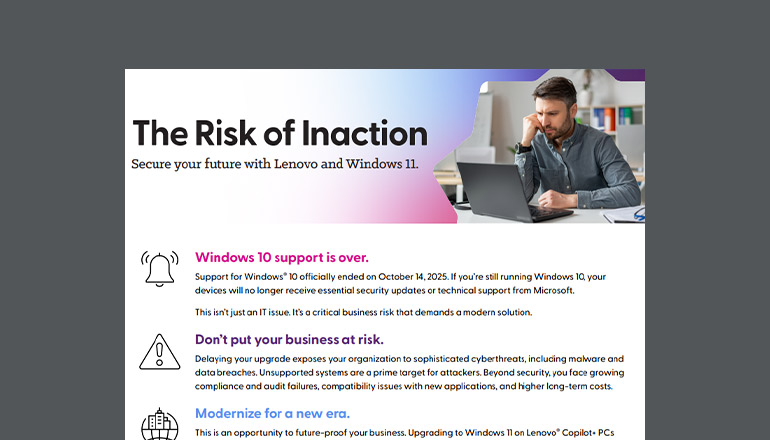Blog Distributed Teams Best Practices
New technologies provide powerful ways to connect employees across distributed work environments. Here’s how you can ensure your workforce stays connected — even when they can’t meet face-to-face.
By Angel Marenco / 14 Nov 2019 / Topics: Modern workplace Mobility Hybrid workforce

If you’re still on the fence about the benefits of a mobile workforce, there are a few statistics that might help make up your mind, but the key takeaway is this: Distributed teams are here to stay. This blog will discuss distributed teams best practices with a few tips to help you establish an effective remote workforce built on a foundation of open communication and trust.
What is a distributed team?
Simply put, a distributed team or a distributed workforce is one that’s not physically co-located in the same office. It’s a term most often used to describe teams that are spread out across separate time zones, or even countries, but it can also apply on a much smaller scale.
Similar terms include:
Dispersed workforce — an organization in which teammates work across remote and on-site environments. Read the full definition here.
Hybrid workforce — a business continuity approach that uses a mix of on-site and remote employees. Read the full definition here.
Hybrid workplace — a modern work environment that includes both on-site and remote work. Read the full definition here.
Many organizations have employees or whole departments that work in different buildings within the same city. However, traveling across town every time you need to have a team meeting or a chat with a co-worker is unrealistic. Even those in relatively close proximity to one another often need to find innovative ways to connect when they can’t meet face-to-face.
Sound familiar? Then guess what — you have a distributed team that needs to be treated as such. Whether it’s a single remote employee or a large branch of your business, effectively managing a distributed workforce requires a few key considerations.
Define channels of communication.
Clear communication is key to any team’s success. Specific communication is absolutely critical for a remote workforce.
When the option of simply shouting something down the hall or chatting over a coffee break no longer applies, it’s important to define and document a concrete communication strategy. A well-defined method for sharing information ensures all employees have a clear understanding of your goals, objectives and processes across your organization.
Here are a few common but effective strategies to improve your ability to communicate as a distributed team:
- Real-time chat with searchable history – It seems that every week, a new chat platform is developed, but there’s no arguing the importance of supporting real-time communication between teammates. A chat that emphasizes shared common channels over individual direct messages is preferred because it defaults to providing all employees with equal access to information about a topic rather than requiring users to remember to share with the group.
- Video chat – Being able to discuss things face-to-face has a strong impact on collaboration and productivity. In fact, you should try to foster a culture of video-first communication, encouraging teammates to join meetings with video, not just voice. Your team's engagement and connection to each other will increase when they can see who they’re working with.
- Document storage/archival – This could be a wiki, a shared drive or a Customer Relationship Management (CRM) platform; but whatever you decide to use, make sure everyone has access and that items are kept up to date. Get familiar and comfortable with versioning documents rather than creating multiple copies so there’s no confusion as to which is the official or final version.
- Issue or project tracking – Whether it’s a ticketing system or a project management tool, finding an effective way to track progress on issues and tasks will reduce friction around reporting progress and documenting work. This last point is particularly important because relying upon team members with tribal knowledge, rather than a team with shared knowledge, can create bottlenecks or conflicting resolutions to the same issues.
- Tool integration – The time, money and effort required to get your tools working together will be well worth the investment. Many modern collaboration tools offer different integrations so that resources can be easily reached from one location. It’s not uncommon to be able to reach your file storage, or interact with a ticket, right from your chat program. You may also be able to use monitoring systems to post alerts into public channels so your entire team is made instantly aware of any issues. The more integrated your tools are, the more clear and streamlined communication will be.
Together, these tools and strategies will enable your team to communicate more effectively across geographic locations, while accounting for asynchronous instances. If your team is spread across time zones, the ability to share ideas in non-real time will become an integral part of your day-to-day. Even if teammates are in the same city, becoming comfortable with working and communicating asynchronously will empower your workforce to move toward a more project/task-based approach to productivity.
Trust is a two-way street.
When an employee is hired, they’re granted an inherent level of trust that they’ll be able to do the work they were hired to do. This applies whether they work remotely or on-site. Micromanaging is great way to ruin a working relationship and drive people away. It’s absolutely essential to trust your employees — on-site or otherwise.
Your distributed team should have a working agreement that everyone abides by. You may decide to work during “normal” office hours, ensuring that everyone is online, available and responsive between nine and five. This is a common approach — but working on a distributed team also allows you to offer a unique level of flexibility to your employees, helping them balance their work and personal lives. Deadlines or Service Level Agreements (SLAs) can help keep your team on track outside of regular hours.
This requires trust, as an employer. Just because you haven’t heard back within an hour of an email or an assignment doesn’t mean you should go into panic mode. If your team has agreed on 24-hour turn arounds, give them that time. Of course, employees need to honor this agreement as well. You just need to find what works for you as a team and make sure that agreement is respected by all parties involved.
Beyond protecting this bond of trust, working remotely presents a unique set of challenges, but there are some things you can do to reduce distractions and set yourself up for success:
- Respect your time. It can be easy to lose track of time and work longer hours if you’re at home because you’re in a more comfortable environment. Try setting timers to remind yourself that you’ve worked a full day. You can always come back to your work later.
- Help others respect your time. Whether you live with family or friends, it can be difficult for those who don’t work remotely to differentiate between your time “at home” and your time “at work.” Be sure to set boundaries with the people in your life to help them understand when you need your space. This may mean hanging a do-not-disturb sign on your office door or simply turning off notifications on your phone during your work hours.
- Separate your workspace from your personal space. Depending on your situation, this can be tricky, but separating your workspace and personal space will create a mental trigger that helps boost productivity. Try setting rules for yourself such as never working from the couch or using different sides of your desk for work and personal documents. These patterns will soon become habits that allow you to optimize work time and relaxation time.
- Have a routine. The removal of a standard coffee-commute-work routine can be disruptive until you find a new rhythm. Try to do so as quickly as possible. This may mean having a coffee and checking your email before breaking for a shower; or it could mean scheduling an afternoon break to get things done around the house. Establishing a clear routine will help you stay organized and provide clear expectations for availability with your team.
Is this even remotely Agile?
Some may ask if a distributed team can be applied within an Agile framework. The real question should be, what in the Agile manifesto prevents remote work? The answer is: nothing.
There are several tenets and values of Agile that center around people, none of which stipulate that those people must be co-located. What they do promote is open communication between people:
“The most efficient and effective method of conveying information to and within a development team is face-to-face conversation.”
This sixth Agile tenet is often cited as a reason why remote work and Agile are not fully compatible. And while it’s difficult to argue against a face-to-face conversation being the most effective way to communicate, take a moment to re-read the statement. Now ask yourself, what does face-to-face really mean in 2019 and beyond?
When this tenet was written back in 2001, the first iPhone had yet to be released; the world of modern communication was only a futuristic vision. Since then, video communication and other collaborative tools have improved in leaps and bounds, making it almost as easy to talk to someone face-to-face from the beach as it is from your office. In another 10 years, Augmented Reality (AR) and Virtual Reality (VR) will provide innovative new ways to communicate and collaborate from remote locations.
“Individuals and interactions over processes and tools.”
This Agile value aligns well with the ideas discussed so far in this blog. Tools will come and go — what matters is that the tools you decide to use enable rather than inhibit interactions and collaboration within an Agile framework.
“Build projects around motivated individuals. Give them the environment and support they need and trust them to get the job done.”
Whether you’ve adopted Agile, or any other methodology, failure to commit will lead to failure in execution. As an employer, it’s your responsibility to make sure you have the systems in place to support your employees and reduce any friction that may occur throughout the process.
It’s up to you.
Building a distributed team can help your company attract and retain top talent, but it does come with its own requirements and challenges. Distributed teams can be extremely effective if they have the information and tools they need to get their work done. But remote employees can’t be considered an afterthought; they’re an equal part of your workforce.
By addressing these challenges head-on with an honest commitment to the process, you’ll be able to build a distributed work environment that benefits your employees, your stakeholders, your products and, ultimately, your customers.




